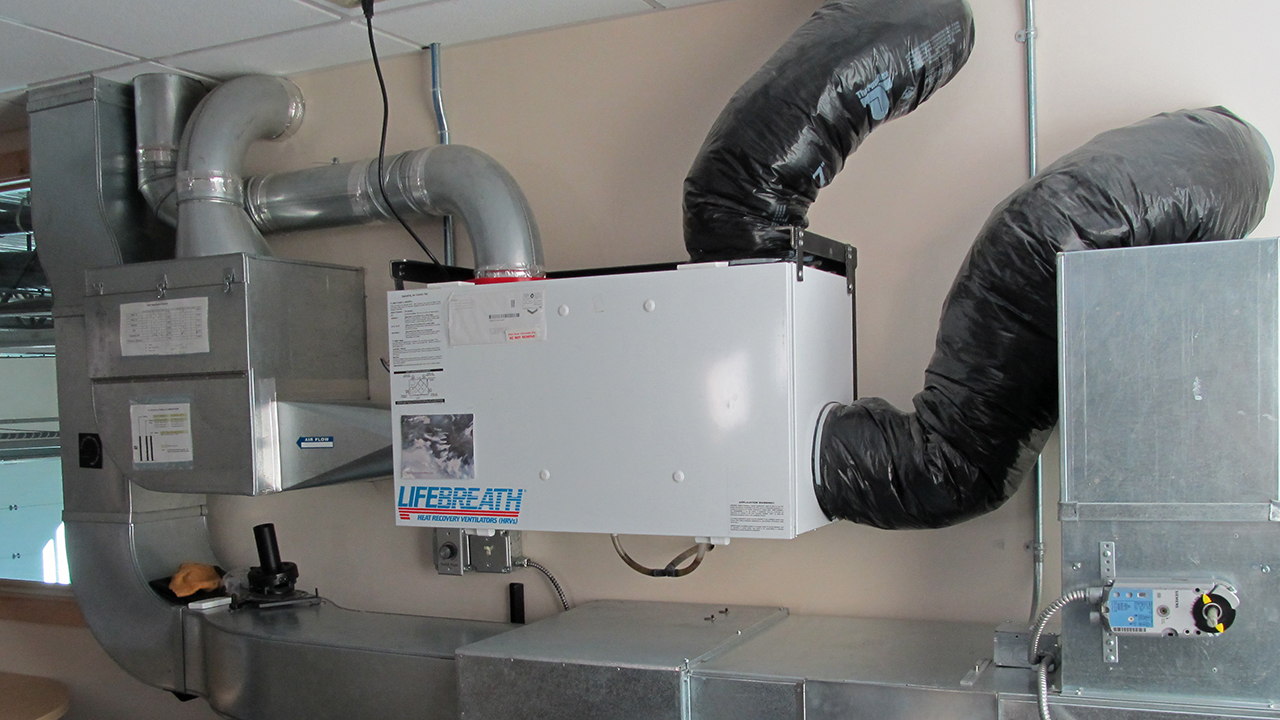Financial Insights with HRV in Warm Climates
The All-Inclusive Overview to the Uses of Heat Recovery Ventilation in Modern Buildings
Heat Recovery Ventilation (HRV) systems stand for a significant development in building technology (HRV Heat Recovery Ventilation). They provide a technique for exchanging stale interior air with fresh outdoor air while decreasing energy loss. This method not just boosts indoor air quality yet also adds to energy effectiveness in both residential and business buildings. Recognizing the numerous applications and benefits of HRV can expose its critical function in modern-day design and sustainability efforts. The effects of this technology deserve exploring even more
Recognizing Heat Recovery Ventilation Systems

Although lots of modern-day buildings prioritize power effectiveness, comprehending heat recuperation ventilation (HRV) systems is crucial for optimizing indoor air high quality and lowering energy consumption. HRV systems work by transferring warmth from stagnant interior air to inbound fresh air, properly maintaining comfortable indoor temperatures while minimizing energy loss. These systems include a heat exchanger, followers, and ductwork that promote the circulation of air. Throughout winter months, HRV devices record and recycle warm from the outbound air, while in summertime, they can help cool inbound air. By constantly trading air, HRV systems likewise decrease humidity and the focus of interior contaminants. Appropriate installation and maintenance of HRV systems are essential for their effectiveness and performance in boosting general structure performance and comfort.
Benefits of Heat Recovery Ventilation
Heat recovery ventilation systems offer countless advantages that improve both power performance and interior air high quality in modern buildings. By catching and reusing power from exhaust air, these systems substantially minimize heating & cooling costs, resulting in reduced power usage. Moreover, they preserve a stable circulation of fresh outside air, minimizing the danger of indoor air contaminants and allergens. This continual exchange assists regulate humidity levels, avoiding mold and mildew development and making sure a healthier living setting. Furthermore, HRV systems contribute to sustainability objectives by lowering total carbon impacts. Their capability to maximize ventilation without compromising thermal convenience makes them an important enhancement to modern building layout, promoting both economic and eco-friendly benefits.
Applications of HRV in Residential Buildings
As home owners progressively focus on power performance and indoor air high quality, the applications of warmth recovery ventilation (HRV) systems in household structures have ended up being a lot more prevalent. HRV systems are particularly useful in securely sealed homes, where keeping fresh air blood circulation is crucial for preventing moisture accumulation and interior toxins. They effectively transfer warm from outward bound stagnant air to inbound fresh air, minimizing power prices related to heating and cooling. Additionally, HRVs can improve comfort levels by regulating humidity and temperature. They are also adaptable for various residential styles, consisting of single-family homes and multi-unit structures. Generally, incorporating HRV systems sustains sustainable living methods while making certain a much healthier interior atmosphere for passengers.
HRV in Industrial and Industrial Settings
In industrial and commercial setups, the execution of warmth recuperation air flow (HRV) systems has ended up being increasingly important for enhancing go to this website power effectiveness and preserving air top quality. These systems properly move warm from exhaust air to incoming fresh air, reducing the demand for added heating or cooling. This not only decreases power expenses however likewise adds to sustainability efforts. Industries such as manufacturing, warehousing, and workplace structures benefit substantially from HRV systems, as they help manage temperature and humidity levels, making certain a comfy and efficient environment. Additionally, HRV systems help in eliminating contaminants and excess moisture, enhancing interior air quality. As policies around air top quality end up being more stringent, the adoption of HRV find more modern technology is likely to expand, making it a vital component of modern-day commercial and commercial infrastructure.
Future Patterns in Heat Recovery Ventilation Technology

Regularly Asked Inquiries
Exactly How Does Heat Recovery Ventilation Impact Indoor Air Quality?
Heat recovery ventilation substantially boosts indoor air top quality by continually trading stagnant interior air with fresh outside air while recuperating power. This process lowers pollutants, preserves learn this here now optimal humidity degrees, and guarantees a much healthier setting for residents.
Can HRV Equipments Be Mounted in Existing Structures?
HRV systems can undoubtedly be installed in existing structures. Retrofitting might call for modifications to ductwork and air flow layouts, however it substantially boosts energy effectiveness and indoor air top quality, making it a viable alternative for older frameworks.
What Upkeep Is Required for HRV Solutions?

Are There Specific Climates Where HRV Is A Lot More Efficient?
Heat recovery ventilation systems are particularly reliable in climates with significant temperature level differences in between periods. These systems optimize power effectiveness by recovering warmth from exhaust air, making them perfect for both cool and reasonably warm settings.
How Do HRV Equipments Affect Energy Costs?
